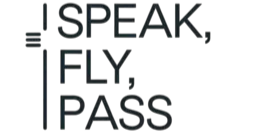
Free Aviation English Course: Essential Guide
Share
In the increasingly globalized aviation industry, effective communication is not just important—it's essential for safety. Aviation English serves as the standardized language that connects pilots, air traffic controllers, and ground personnel across the world, regardless of their native tongues. For aviation professionals seeking to enhance their language skills without financial burden, free aviation English courses provide an invaluable opportunity to meet international requirements and advance their careers. Let's explore the world of free aviation English resources and how they can help you excel in the aviation sector.
Introduction to Aviation English
Aviation English is a specialized form of English used by pilots, air traffic controllers, and other aviation personnel to ensure clear communication during flight operations. Established by the International Civil Aviation Organization (ICAO), it consists of standardized phraseology, terminology, and communication protocols designed to minimize misunderstandings that could lead to dangerous situations.
The ICAO has established that all pilots and air traffic controllers operating in international airspace must demonstrate a minimum of Level 4 (Operational) proficiency in Aviation English. This requirement is not merely bureaucratic—it's a critical safety measure implemented after several tragic accidents were attributed to communication failures.
What constitutes Aviation English?
- Standardized phraseology for routine communications
- Plain English for non-routine situations
- Technical vocabulary specific to aviation
- Clear pronunciation that's intelligible across accents
- Grammatical structures necessary for effective communication
Importance of Aviation English in the Industry
The critical role of Aviation English extends beyond mere regulatory compliance—it serves as the backbone of global aviation safety. When aircraft traverse international airspace, communication between flight crews and controllers from different linguistic backgrounds must be flawlessly understood, especially during emergencies.
Safety Implications
Historical aviation incidents have repeatedly demonstrated the dire consequences of miscommunication. For example, the 1977 Tenerife disaster, which remains the deadliest accident in aviation history, involved critical misunderstandings in radio communications. Such tragedies have reinforced the industry's commitment to standardizing aviation communication.
Career Advancement Opportunities
Beyond safety considerations, proficiency in Aviation English opens doors professionally. As pointed out in a recent partnership between JSfirm.com and the National Association of Aviation Authorities, there's an increasing focus on improving access to aviation careers through proper training and education. Aviation professionals with strong English skills are considerably more marketable in the global job market.
Overview of Free Aviation English Courses
While traditional aviation language training can be expensive, numerous free resources have emerged to help aviation professionals meet ICAO language requirements without financial burden. These free courses vary in depth, structure, and focus, but they all aim to improve communication skills crucial for aviation safety.
Types of Free Courses Available
Free Aviation English courses generally fall into several categories:
- Self-study courses: Downloadable materials, self-paced learning modules
- Video-based instruction: YouTube channels dedicated to Aviation English
- Interactive practice platforms: Online exercises and simulations
- Mobile apps: Portable learning solutions for aviation professionals
- Community forums: Peer-to-peer learning and practice opportunities
While these free resources may not always replace comprehensive paid courses, they provide excellent supplementary training and preparation for ICAO English proficiency tests.
Key Topics Covered in Aviation English Courses
Effective Aviation English courses, whether free or paid, cover specific core components designed to meet the ICAO language proficiency requirements. These components ensure that aviation professionals can communicate effectively in both routine and non-routine situations.
| Core Component | Description | Importance |
|---|---|---|
| Standard Phraseology | Precise, pre-defined phrases for routine communications | Ensures consistency and brevity in normal operations |
| Plain English for Non-routine Situations | Clear communication skills for unexpected events | Critical for handling emergencies and unusual situations |
| Aviation Vocabulary | Technical terms specific to aircraft, navigation, and procedures | Establishes common terminology across linguistic barriers |
| Radiotelephony Procedures | Protocols for effective radio communication | Ensures messages are transmitted clearly and efficiently |
| Listen and Comprehension | Ability to understand various accents at normal speaking speed | Prevents misunderstandings in fast-paced environments |
To better understand how these components are taught, here's an example from a comprehensive ICAO English course:
Benefits of Learning Aviation English for Pilots and Crew
Mastering Aviation English delivers numerous advantages beyond simply meeting regulatory requirements. For pilots, air traffic controllers, and other aviation professionals, strong language skills translate directly to career opportunities and operational safety.
Enhanced Safety and Operational Efficiency
Clear communication directly contributes to safer flights. When all parties understand each other precisely, the risk of dangerous misunderstandings diminishes significantly. Crews that communicate effectively also operate more efficiently, reducing delays and improving passenger experience.
Global Career Mobility
Aviation professionals with strong English skills can work almost anywhere in the world. According to industry experts like IATA's training department, language proficiency ranks among the top qualifications international airlines seek when hiring. With the aviation industry constantly evolving, as evidenced by TrustFlight's recent launch of specialized training divisions, professionals who meet language requirements position themselves advantageously.
Confidence in Stressful Situations
When emergencies arise, the ability to communicate clearly under pressure becomes paramount. Aviation English training builds this crucial skill, enabling personnel to remain calm and articulate during high-stress scenarios.
Online Resources for Free Aviation English Courses
The internet offers a wealth of no-cost resources for Aviation English learners. While paid courses often provide more structured and comprehensive training, these free alternatives offer excellent starting points or supplementary materials.
YouTube Channels
- Aviation English for ATC & Pilots - Specialized videos for ICAO phraseology
- ICAO English Online Course - Comprehensive lessons for all aspects of aviation communication
- Aviation English Club - Practice scenarios and vocabulary building
Websites and Platforms
- English Aviation Books by SpeakFlyPass - Comprehensive resources specifically designed for ICAO test preparation
- ICAO Language Proficiency Requirements - Official guidance and practice materials
- Aviation English Virtual Communities - Forums where professionals practice together
Many of these resources are developed by experienced aviation professionals who understand the practical language needs of the industry. When used consistently, these free materials can significantly improve your Aviation English proficiency.
How to Choose the Right Aviation English Course
With numerous options available, selecting the most beneficial Aviation English course requires careful consideration of several factors. Whether choosing free resources or investing in paid training, keep these criteria in mind:
Alignment with ICAO Requirements
The most crucial aspect of any Aviation English course is its alignment with ICAO standards. Effective courses should explicitly address the six language proficiency criteria: pronunciation, structure, vocabulary, fluency, comprehension, and interactions.
Industry Credibility
Look for courses developed or endorsed by established aviation organizations, airlines, or language assessment providers. These typically reflect current industry standards and practices.
Learning Format Compatibility
Consider your learning preferences and schedule constraints when choosing a course. Some individuals thrive with self-paced video lessons, while others benefit from interactive sessions or regular instructor feedback.
Questions to ask when evaluating a course:
- Does it focus specifically on aviation contexts rather than general English?
- Does it address both standard phraseology and plain English for non-routine situations?
- Does it include authentic listening materials that reflect real-world radio communications?
- Does it provide opportunities for speaking practice and feedback?
- Is it updated regularly to reflect current aviation practices?
Remember that even free courses should meet basic quality standards. A combination of free resources and strategic investment in key paid materials often provides the most cost-effective approach to ICAO preparation.
Tips for Improving Your Aviation English Skills
Beyond formal courses, there are numerous practical strategies to enhance your Aviation English proficiency. Consistent practice using various techniques can accelerate your progress and help maintain your skills over time.
Immersive Listening Practice
Regularly expose yourself to aviation communications by listening to:
- Live ATC feeds online
- Recorded pilot-controller interactions
- Aviation documentaries and incident analyses
Deliberate Speaking Practice
Create opportunities to use Aviation English actively:
- Practice with colleagues or study partners
- Record yourself handling simulated scenarios
- Join online aviation English communities
The emerging technologies in aviation training, such as the mixed reality simulations now used in helicopter rescue training, demonstrate how immersive practice environments can enhance learning outcomes. While such advanced technology may not be accessible to everyone, the principle of realistic practice remains valuable.
Certification and Assessment in Aviation English
Understanding the certification process is crucial for aviation professionals seeking to demonstrate their English proficiency officially. The ICAO has established a six-level rating scale, with Level 4 (Operational) being the minimum standard for international operations.
ICAO Language Proficiency Requirements
The ICAO assessment evaluates six key areas:
- Pronunciation: Clear enough to be understood by the aviation community
- Structure: Appropriate grammatical structures and sentence patterns
- Vocabulary: Range and accuracy of terminology
- Fluency: Natural, unhesitating speech
- Comprehension: Understanding of work-related topics
- Interactions: Appropriate and effective exchanges
Common Testing Systems
Several testing systems are widely recognized for aviation English assessment, including:
- Test of English for Aviation (TEA)
- English Language Proficiency for Aeronautical Communication (ELPAC)
- Aviation English Language Test (AELT)
- Versant Aviation English Test
Most free courses will help you prepare for these assessments, though they typically don't provide the actual certification. For that, you'll need to register with an approved testing center through your national aviation authority or an authorized provider.
Case Studies: Successful Learning Experiences in Aviation English
The journey to Aviation English proficiency varies widely among professionals, but successful learners often share common approaches and mindsets. Consider these real-world examples:
The Self-Directed Controller
Carlos, an air traffic controller from South America, achieved ICAO Level 5 proficiency primarily through free online resources. His strategy involved daily immersion in authentic materials: listening to ATC recordings for 30 minutes each morning, participating in aviation English forums during lunch breaks, and practicing phraseology with colleagues. By supplementing free courses with consistent real-world practice, Carlos advanced from Level 3 to Level 5 in 14 months.
The Diverse-Resource Pilot
Mei, a commercial pilot from Asia, combined free YouTube courses with targeted paid resources from SpeakFlyPass to create a comprehensive preparation strategy. She allocated specific days for different skills: Mondays for terminology, Tuesdays for listening practice, Wednesdays for speaking exercises, and so on. This structured approach, using varied resources, helped her maintain motivation and address all aspects of the ICAO requirements systematically.
Key Takeaways from Successful Learners:
- Consistency matters more than intensity—daily practice yields better results than occasional cramming
- Combining multiple resources provides more comprehensive coverage than relying on a single source
- Authentic materials and realistic scenarios prepare you for actual operational communications
- Finding practice partners significantly improves speaking confidence and fluency
- Recording yourself helps identify patterns in pronunciation or grammar that need improvement
Conclusion
Free Aviation English courses represent an accessible entry point for aviation professionals seeking to enhance their communication skills and meet international standards. While they may not always offer the same comprehensive coverage as paid alternatives, they provide valuable resources for motivated learners.
By combining these free options with consistent practice, authentic materials, and perhaps strategic investment in key supplementary resources, aviation professionals can effectively prepare for ICAO English proficiency requirements. In an industry where clear communication directly impacts safety, investing time in language proficiency isn't just about meeting regulations—it's about contributing to a safer global aviation environment.
Whether you're a pilot, controller, or another aviation professional, the resources outlined in this article provide a starting point for your Aviation English journey. With dedication and the right approach, you can achieve the proficiency needed for international operations without significant financial investment.
